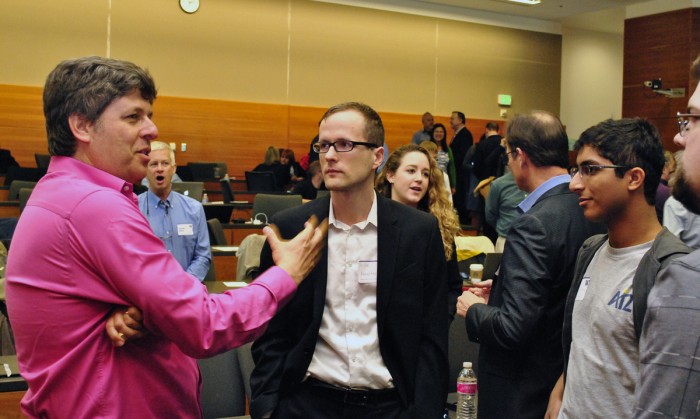What to Do When a Robot Is the Guilty Party
Should the government regulate artificial intelligence? That was the central question of the first White House workshop on the legal and governance implications of AI, held in Seattle on Tuesday.
“We are observing issues around AI and machine learning popping up all over the government,” said Ed Felten, White House deputy chief technology officer. “We are nowhere near the point of broadly regulating AI … but the challenge is how to ensure AI remains safe, controllable, and predictable as it gets smarter.”
One of the key aims of the workshop, said one of its organizers, University of Washington law professor Ryan Calo, was to help the public understand where the technology is now and where it’s headed. “The idea is not for the government to step in and regulate AI but rather to use its many other levers, like coördination among the agencies and procurement power,” he said. Attendees included technology entrepreneurs, academics, and members of the public.
In a keynote speech, Oren Etzioni, CEO of the Allen Institute for Artificial Intelligence, noted that we are still in the Dark Ages of machine learning, with AI systems that generally only work well on well-structured problems like board games and highway driving. He championed a collaborative approach where AI can help humans to become safer and more efficient. “Hospital errors are the third-leading cause of death in the U.S.,” he said. “AI can help here. Every year, people are dying because we’re not using AI properly in hospitals.”

Nevertheless, Etzioni considers it far too early to talk about regulating AI: “Deep learning is still 99 percent human work and human ingenuity. ‘My robot did it’ is not an excuse. We have to take responsibility for what our robots, AI, and algorithms do.”
A panel on “artificial wisdom” focused on when these human-AI interactions go wrong, such as the case of an algorithm designed to predict future criminal offenders that appears to be racially biased. “The problem is not about the AI agents themselves, it’s about humans using technological tools to oppress other humans in finance, criminal justice, and education,” said Jack Balkin of Yale Law School.
Several academics supported the idea of an “information fiduciary”: giving people who collect big data and use AI the legal duties of good faith and trustworthiness. For example, technologists might be held responsible if they use poor quality data to train AI systems, or fossilize prejudices based on race, age, or gender into the algorithms they design.
As government institutions increasingly rely on AI systems for decision making, those institutions will need personnel who understand the limitations and biases inherent in data and AI technology, noted Kate Crawford, a social scientist at Microsoft Research. She suggested that students be taught ethics alongside programming skills.
Bryant Walker Smith from the University of South Carolina proposed regulatory flexibility for rapidly evolving technologies, such as driverless cars. “Individual companies should make a public case for the safety of their autonomous vehicles,” he said. “They should establish measures and then monitor them over the lifetime of their systems. We need a diversity of approaches to inform public debate.”
This was the first of four workshops planned for the coming months. Two will address AI for social good and issues around safety and control, while the last will dig deeper into the technology’s social and economic implications. Felten also announced that the White House would shortly issue a request for information to give the general public an opportunity to weigh in on the future of AI.
The elephant in the room, of course, was November’s presidential election. In a blog post earlier this month, Felten unveiled a new National Science and Technology Council Subcommittee on Machine Learning and Artificial Intelligence, focused on using AI to improve government services “between now and the end of the Administration.”
Keep Reading
Most Popular
Large language models can do jaw-dropping things. But nobody knows exactly why.
And that's a problem. Figuring it out is one of the biggest scientific puzzles of our time and a crucial step towards controlling more powerful future models.
How scientists traced a mysterious covid case back to six toilets
When wastewater surveillance turns into a hunt for a single infected individual, the ethics get tricky.
The problem with plug-in hybrids? Their drivers.
Plug-in hybrids are often sold as a transition to EVs, but new data from Europe shows we’re still underestimating the emissions they produce.
Stay connected
Get the latest updates from
MIT Technology Review
Discover special offers, top stories, upcoming events, and more.